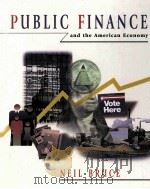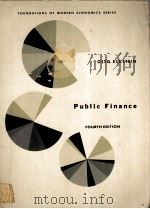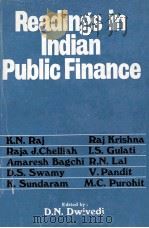《Public Finance》
| 作者 | Harley Leist Lutz 编者 |
|---|---|
| 出版 | D.Appleton and Company |
| 参考页数 | 681 |
| 出版时间 | 1924(求助前请核对) 目录预览 |
| ISBN号 | 无 — 求助条款 |
| PDF编号 | 818088118(仅供预览,未存储实际文件) |
| 求助格式 | 扫描PDF(若分多册发行,每次仅能受理1册) |

PART ⅠINTRODUCTION1
CHAPTER Ⅰ.MEANING AND SCOPE OF PUBLIC FINANCE3
Public Finance Defined3
Public and Private Finance6
Public Finance and Economics7
Public Finance and Political Science9
Public Finance and History9
Public Finance and Statistics10
Scope of the Subject11
CHAPTER Ⅱ.DEVELOPMENT OF PUBLIC FINANCE13
Public Finance in Ancient Times13
Public Finance in the Medieval Period16
The Influence of the Cameralists17
The Influence of Adam Smith19
PART ⅡPUBLIC EXPENDITURES23
CHAPTER Ⅲ.INTRODUCTORY CONSIDERATIONS25
Government Is a Social Necessity25
The Nature of Public Expenditures25
Scope of State Functions28
The Limits to State Activity31
The Industrial Revolution Increased Public Expenditures32
Humanitarianism Expanded Public Obligations33
Differences between Public and Private Economy34
CHAPTER Ⅳ.THE CLASSIFICATION OF PUBLIC EXPENDITURES36
Proper Classification Promotes Public Interest in Finance37
Classification Is Essential to Budget-Making38
Various Methods of Classification39
CHAPTER Ⅴ.THE INCREASE OF EXPENDITURES:THE FACTS46
Federal Expenditures49
General Conclusions Respecting the Federal Expenditure60
State Expenditures Also Have Increased Rapidly62
Growth of Municipal Expenditure64
CHAPTER Ⅵ.CAUSES OF INCREASING EXPENDITURES AND THE MEANS OF CONTROLLING THEM69
General Causes of Increasing Public Expenditure69
Causes of Increased Federal Expenditure76
Causes of Increased State and Local Expenditure77
Financial Significance of the Social Functions of Government79
Means of Controlling the Increase of Expenditures82
Expenditures in Relation to Wealth and Income88
CHAPTER Ⅶ.ECONOMIC EFFECTS OF PUBLIC EXPENDITURE94
Real versus Nominal Expenditures94
Ordinary and Extraordinary Expenditure95
Productive and Unproductive Expenditure98
Public and Private Viewpoints Further Contrasted100
The Economic Effects of Public Expenditure104
Expenditures to Safeguard Social Welfare Are Productive106
Expenditure to Improve the Quality of Social Life Is Productive106
Expenditure May Affect the Distribution of Wealth109
CHAPTER Ⅷ.CENTRAL VERSUS LOCAL CONTROL OF EXPENDITURE111
Federal Centralization113
State Centralization115
No Clear Principle of Functional Distribution115
Importance of Relative Resources117
Final Responsibility Rests with the State118
Subsidies and Grants119
PART ⅢPUBLIC REVENUES EXCEPT TAXATION129
CHAPTER Ⅸ.THE FORMS OF REVENUE131
The Classification of Public Revenues132
Revenue Sources under Cameralism133
Adam Smith's Classification of Revenue Sources134
A Proposed Classification of Public Revenues136
CHAPTER Ⅹ THE PUBLIC DOMAIN:LANDS AND FORESTS141
The Public Domain in Other Countries141
Problems of Policy Presented by the Domain142
Public Ownership of Forest Lands147
Deposits of Minerals and Metals in the Public Domain151
The Public Domain in the United States151
Preemption155
The Homestead Policy156
Financial Results of the Public Land Policy158
Reclamation159
CHAPTER Ⅺ.THE INDUSTRIAL DOMAIN:STATE INDUSTRIES161
General Motives for Public Ownership161
Characteristics of the Public Industry164
The Post Office as a Public Industry170
State Railways177
State Ownership of the Telegraph184
State Ownership of the Telephone185
State Banking186
State Manufacturing187
CHAPTER Ⅻ.THE INDUSTRIAL DOMAIN:MUNICIPAL INDUSTRIES190
Extent of Municipal Ownership in Great Britain190
Extent of Municipal Ownership in Germany192
Municipal Ownership in the United States193
Financial Results of Municipal Ownership197
Municipal Water Systems201
Municipal Light and Power Plants204
Municipal Railways206
Miscellaneous Municipal Undertakings207
Tax Exemption of Municipally Owned Utilities208
Municipal Investments210
General Conclusions211
CHAPTER ⅩⅢ.ADMINISTRATIVE REVENUES215
Financial Position of the Administrative Revenues217
Fines217
Fees218
Licenses220
Special Assessments223
Financial Significance of the Special Assessment226
Excess Condemnation232
PART Ⅳ TAXATION237
CHAPTER ⅩⅣ.MEANING AND DEVELOPMENT OF TAXATION239
Importance of Taxation239
Characteristics of a Tax240
Constitutional Restrictions on the Taxing Power245
Characteristics of American Taxation247
Rise and Decline of the General Property Tax248
Diversity of Taxation248
Revival of State Income Taxes249
The State Tax Commission249
Interstate Complications251
Separation of Sources of State and Local Revenue251
Some Technical Terms253
CHAPTER ⅩⅤ.SOME REQUISITES OF A SOUND TAX SYSTEM257
Fiscal Adequacy257
Economy260
Equity261
Elasticity262
Simplicity264
Diversity266
Flexibility268
CHAPTER ⅩⅥ.THE DISTRIBUTION OF THE TAX BURDEN272
Taxation According to Benefit273
Taxation According to Ability275
Income as a Measure of Ability277
Proportional versus Progressive Taxation282
Earned versus Unearned Incomes285
Double Taxation287
Taxation for Nonfiscal Purposes290
CHAPTER ⅩⅦ.MEANS OF ESCAPE FROM TAXATION294
Legal Evasion of Taxes294
Theories of Tax Shifting296
Shifting Involves Price Manipulation298
Tax Capitalization299
Incidence of the Tax on Land308
Incidence of the Tax on Buildings311
Incidence of the Personal Property Tax312
Incidence of the Income Tax315
Incidence of the Sales Tax317
CHAPTER ⅩⅧ.THE GENERAL PROPERTY TAX320
Development of the General Property Tax320
Theory of the General Property Tax322
Theoretical Defects of the General Property Tax326
Administrative Defects of the General Property Tax332
Typical Structure of the General Property Tax333
Influence of Increasing Expenditure336
Methods of Evasion338
Competitive Undervaluation of Property340
Administrative Reforms342
The State Equalization343
The State Tax Commission344
Results of the General Property Tax346
CHAPTER ⅩⅨ.MODIFIED PROPERTY TAXES351
Classes of Property352
Different Methods of Dealing with Intangibles356
The Taxation of Tangible Personal Property359
The Taxation of Real Property360
Importance of Effective Administration360
Essentials of Land Appraisal361
Central Control of the Assessment Essential369
The Assessment of Urban Lands369
The Assessment of Buildings373
House Taxes as an Index of Ability374
The Exemption of Buildings and Improvements376
CHAPTER ⅩⅩ.TAXES ON CORPORATIONS381
Development of Corporation Taxes381
Methods of Railroad Taxation386
The Taxation of Other Classes of Public Utilities394
The Taxation of Banks396
Special Forms of Corporation Taxes400
The General Corporation Tax401
The"Business"Tax403
The Capital Stock Tax405
CHAPTER ⅩⅪ.CONSUMPTION AND OTHER EXCISE TAXES407
Principles of Commodity Taxation409
Development of Federal Internal Taxes412
Financial Results of the Federal Internal Taxes415
Incidence of Commodity Taxes418
The Customs420
State Taxation of Commodities424
State Privilege and Occupation Taxes425
The West Virginia Privilege Tax425
The Severance Tax426
The Occupation Tax427
CHAPTER ⅩⅫ.TAXES ON INCOMES428
The Civil War Income Taxes431
The Income Tax of 1894434
The Federal Corporation Tax of 1909436
The Modern Federal Income Tax438
The Corporation Income Tax441
War and Excess Profits Taxes443
State Income Taxes444
Principles of Income Taxation446
Whose Income Should be Taxed?447
How Shall We Define Taxable Income?450
The Methods of Assessment455
Rate Structure456
Exemptions and Abatements459
Earned and Unearned Incomes460
Administrative Aspects of the Income Tax463
Relation of Property and Income Taxes465
Publicity of Income Tax Returns466
Fiscal Adequacy of the Income Tax467
Disposition of the Proceeds of State Income Taxes468
CHAPTER ⅩⅩⅢ.ESTATE AND INHERITANCE TAXES470
The Theoretical Basis of the Inheritance Tax470
Development of the Inheritance Tax471
Some Aspects of State Inheritance Tax Laws476
The Federal Estate Tax479
The Federal Gift Tax483
Fiscal Results of the Federal Estate Tax484
Proper Position of the Inheritance Tax484
Equalization of the Distribution of Wealth by Inheritance Taxation487
PART ⅤPUBLIC CREDIT489
CHAPTER ⅩⅩⅣ.THE NATURE AND USES OF PUBLIC CREDIT491
The Nature of Credit498
The State as Debtor497
Conditions for the Rise of Public Credit499
Rapid Increase of Public Debts500
Causes of Debt Increase503
Public Credit and Democracy504
The Menace of Tax-exempt Securities506
CHAPTER ⅩⅩⅤ.PRINCIPLES OF PUBLIC CREDIT513
The Advantage of Public Borrowing Depends on the Purpose513
The Basis of Public Credit516
Public Credit Must Be Tested by Business Standards518
When Is It Legitimate to Borrow?519
The Economic Effects of Public Borrowing525
The Economic Effects of Debt Repayment532
Borrowing for War Purposes534
CHAPTER ⅩⅩⅥ.THE FORMS OF DEBT539
Compulsory Loans539
Patriotic Loans540
Public Borrowing on Business Principles541
Public Debts Classified According to Duration542
Annuities543
Advantage of the Long Term Debt543
The Choice of Debt Forms544
Forms of Short Term Debt544
Legitimate Uses of the Short Term Debt546
Temporary Borrowing in England548
Treasury Certificates in the United States551
Treasury Notes554
Comparison with English Methods556
Economic Effects of Short Term Loans557
Treasury Certificates and Inflation559
Vigorous Taxation Essential561
Methods of Loan Flotation562
Terms of Issue564
CHAPTER ⅩⅩⅦ.REDEMPTION,REFUNDING AND CONVERSION OF DEBT567
Advantages of the Perpetual Debt568
Methods of Debt Redemption572
Serial Bond Redemption574
Sinking Funds577
Federal Sinking Fund Policy579
Local Sinking Funds581
The Capital Levy583
Refunding587
Conversion587
CHAPTER ⅩⅩⅧ.LOCAL DEBTS592
Causes of Local Debt Increase594
National and Local Debts Contrasted601
The Restrictions of Local Debts606
Provisions of a Model Local Debt Statute610
PART ⅥFINANCIAL ADMINISTRATION AND LEGISLATION613
CHAPTER ⅩⅩⅨ.THE BUDGET615
Evolution of the Budget617
The Budget as a Report on the Finances619
The Scope of the Budget627
The Function of the Legislature630
Lump-Sum versus Specific Allotment Appropriations634
Correction and Revision of the Estimates637
Federal Budget Procedure644
Federal Auditing Reform647
CHAPTER ⅩⅩⅩ.SOME ASPECTS OF TREASURY ORGANIZATION AND MANAGEMENT649
The Bank of England as Fiscal Agent653
The Federal Treasury654
The Independent Treasury656
Abolition of the Subtreasuries661
Treasury Organization665
State and Local Depositary Arrangements667
INDEX673
1924《Public Finance》由于是年代较久的资料都绝版了,几乎不可能购买到实物。如果大家为了学习确实需要,可向博主求助其电子版PDF文件(由Harley Leist Lutz 1924 D.Appleton and Company 出版的版本) 。对合法合规的求助,我会当即受理并将下载地址发送给你。
高度相关资料
-

- PUBLIC FINANCE
- 1947
-

- Public Finance
- 1924 D.Appleton and Company
-

- PUBLIC SCHOOL FINANCE
- 1927 RAND MCNALLY & COMPANY
-

- PUBLIC FINANCE AND THE AMERICAN ECONOMY
- 1998 ADDISON-WESLEY
提示:百度云已更名为百度网盘(百度盘),天翼云盘、微盘下载地址……暂未提供。➥ PDF文字可复制化或转WORD










